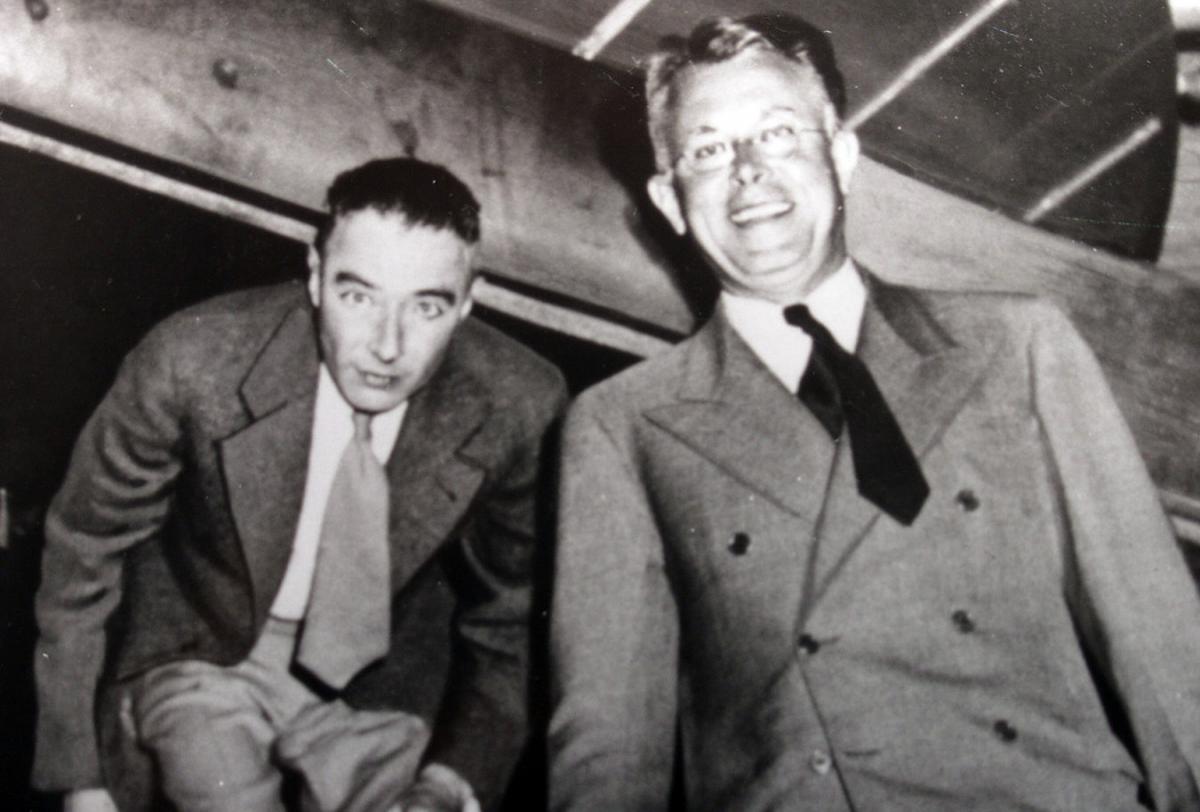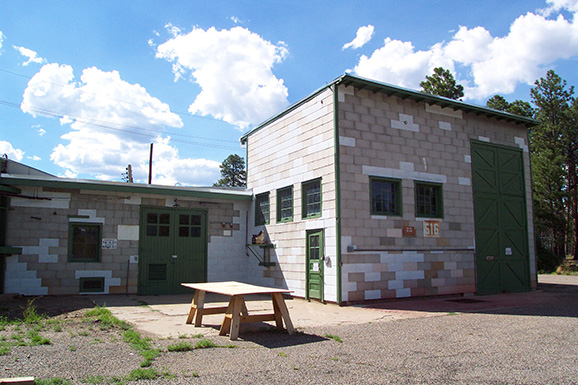Today the Senate passed the 2015 National Defense Authorization Act (NDAA), which includes a provision to establish a Manhattan Project National Historical Park at Los Alamos, NM; Hanford, WA; and Oak Ridge, TN, by a vote 89-11. The House passed the 2015 NDAA legislation on December 4, 2014 by vote of 300-119. The bill now goes to the President who is expected to sign it into law.
No national monument or park previously existed to preserve and interpret the historic properties of the Manhattan Project. As Cynthia C. Kelly, founder and president of the Atomic Heritage Foundation, said, “The national park is long overdue and will provide Americans an important opportunity to understand the Manhattan Project and its complex legacy for the world today.”
The new Manhattan Project Park will be also one of the few that focuses on American science, technology and industry. Noted for its path-breaking inventions, the Manhattan Project offers an excellent opportunity to engage the public in learning about innovation in science, engineering and technology. Interpretation of the park will also prompt reflection on the decision to drop the atomic bomb on Japan and on the extent to which scientists should be accountable for their inventions.
The Manhattan Project reflects the diversity of the American experience with over 600,000 working on the project around the country. Participants included eminent scientists at Los Alamos, NM who were refugees from Nazi regimes. Others were only high school girls from rural America who operated the control panels at plants in Oak Ridge, TN. In isolated, hastily built communities, the Manhattan Project enforced strict secrecy on the hundreds of thousands of people who worked without knowing what they were producing.
Richard Rhodes, Pulitzer Prize-winning author of The Making of the Atomic Bomb and a Board Member of the Atomic Heritage Foundation, commented, “The new weapon was built in makeshift buildings, laboratories and factories all over the United States. Now nearly 70 years later, some of these historic places of the Manhattan Project will at last be preserved as part of the national historical park. The Manhattan Project is significant not only for its role in ending World War II but for introducing a major new force in human affairs. Reason enough to be remembered.”
What’s in the Park?
 Over 30 sites in the United States and Canada contributed to designing and producing components for the atomic bomb in World War II. The new park will focus on three major sites: Los Alamos, NM, where the scientific laboratory that designed and tested the bomb was located; Oak Ridge, TN, where facilities were built to produce enriched uranium; and Hanford, WA, dedicated to the production of plutonium. For each of these sites, the legislation designates both properties associated with the research and production of the bomb and the social and cultural life of the “secret cities.” There are over 40 properties that are officially designated as part of the park with provision for adding others later that contribute to interpreting the Manhattan Project and its “secret cities.”
Over 30 sites in the United States and Canada contributed to designing and producing components for the atomic bomb in World War II. The new park will focus on three major sites: Los Alamos, NM, where the scientific laboratory that designed and tested the bomb was located; Oak Ridge, TN, where facilities were built to produce enriched uranium; and Hanford, WA, dedicated to the production of plutonium. For each of these sites, the legislation designates both properties associated with the research and production of the bomb and the social and cultural life of the “secret cities.” There are over 40 properties that are officially designated as part of the park with provision for adding others later that contribute to interpreting the Manhattan Project and its “secret cities.”
Los Alamos, NM. The legislation incorporates 17 properties owned by the Los Alamos National Laboratory where research on the bomb took place. The major properties include (1) the V Site (three properties in TA-16 restored in 2006) where the “Gadget” or plutonium-based implosion device tested at the Trinity Site was assembled; (2) the Gun Site (four properties in TA-08 undergoing restoration) used to design and develop the uranium gun-type bomb “Little Boy”; (3) Concrete Bowl (TA-06-0037) built for testing plutonium-based bomb designs and retrieving the plutonium; (4) Assembly Building/Quonset Hut (TA-22-1) where the first “Fat Man” bomb was assembled and related implosion and criticality research took place; (5) Pond Cabin (TA-18-29) where fission and early implosion research was conducted; and (6) the Louis Slotin accident building (TA-18-1) where Slotin received a fatal dose of radiation while conducting a criticality experiment in 1946. Once the park is established, the Los Alamos National Laboratory should increase public access to these properties consistent with its ongoing mission and national security concerns.
 In addition, the new park includes 13 properties in the Los Alamos community. Most of these were originally built by the Los Alamos Ranch School which was founded in 1917 and taken over by the government in 1943. These include several of the former Masters’ cottages on Bathtub Row where the top-echelon scientists and military leaders lived: the Baker House where Sir James Chadwick, head of the British Mission, lived; the Power House, converted for George Kistiakowsky; the Spruce Cottage where at various times John Manley, Kenneth Bainbridge, Stan Ulam and Enrico Fermi lived; the Arts and Crafts House where Norris Bradbury lived; and the Peggy Pond Church Cottage where Rear Admiral William Sterling “Deak” Parsons lived.
In addition, the new park includes 13 properties in the Los Alamos community. Most of these were originally built by the Los Alamos Ranch School which was founded in 1917 and taken over by the government in 1943. These include several of the former Masters’ cottages on Bathtub Row where the top-echelon scientists and military leaders lived: the Baker House where Sir James Chadwick, head of the British Mission, lived; the Power House, converted for George Kistiakowsky; the Spruce Cottage where at various times John Manley, Kenneth Bainbridge, Stan Ulam and Enrico Fermi lived; the Arts and Crafts House where Norris Bradbury lived; and the Peggy Pond Church Cottage where Rear Admiral William Sterling “Deak” Parsons lived.
Two cottages will be open to the public, the J. Robert Oppenheimer House and the Hans Bethe House, and could be the “jewels in the crown” of the visitors’ experience. Visitors are also welcome at the Guest House, now the Los Alamos Historical Society Museum, and the Fuller Lodge, a handsome ponderosa pine structure that was a social center for the Manhattan Project. Other properties included in park are the Ice House Memorial on Ashley Pond, the fire cache near the Ancestral Pueblo site, and a former Manhattan Project dormitory and cafeteria.

Oak Ridge, TN. Three properties featured were essential to produce plutonium and enriched uranium, the fissile ingredients of an atomic bomb: (1) X-10 Graphite Reactor served as a pilot facility for the plutonium production reactors at Hanford; (2) Beta-3 Calutrons (Building 9204-3 at the Y-12 plant) separated the isotopes of uranium for the first atomic bomb and continued to be used for isotope separation for over 50 years; (3) Pilot Plant (Building 9731 at the Y-12 plant) demonstrated isotope separation techniques; and (4) the K-25 Building site where the mile-long gaseous diffusion plant once stood. In addition, the park will feature the former Guest House (later called the Alexander Inn) built to accommodate distinguished visitors such as General Leslie Groves, Enrico Fermi, and Ernest O. Lawrence.
Hanford, WA. The park will preserve two iconic Manhattan Project properties: the B Reactor, the world’s first full-scale plutonium production reactor, and the T Plant, used to separate plutonium from the irradiated fuel rods. In addition, four pre-World War II properties will be preserved: the Hanford high school, White Bluffs bank, an agricultural warehouse owned by the Bruggemann family, and the Hanford irrigation district pump house. With these properties, the stories of the pioneering agricultural families as well as the Native Americans who lived, hunted and fished in the Columbia River can be told.
At each site, visitors will be able to experience where the work actually took place and where people lived—in tents, huts, trailers, barracks, and dormitories or for the lucky ones, houses. In the communities of Richland, WA and Oak Ridge, TN, hundreds of “Alphabet” houses built from the same blueprints (e.g., called “A,” “B” and “C,” etc.) have been home for families for over seven decades. While most of the wartime apartments and other housing at Los Alamos were torn down, visitors can walk down Bathtub Row, visit the house where J. Robert Oppenheimer and his family lived, as well as see a cafeteria and dormitory from the Manhattan Project.
Implementing the New Park.
The legislation can be found here. The Manhattan Project Park provision is on pages 1245-1257. The legislation establishes the park no later than one year after enactment during which time the Departments of Energy and Interior need to enter an agreement on their roles and responsibilities. As the nation’s storyteller, the National Park Service will interpret the Manhattan Project. The Department of Energy will ensure the public access, safety, environmental remediation, and historic preservation of its Manhattan Project properties.
A Great Work of Collaboration.
The creation of the Manhattan Project National Historical Park has been a great work of collaboration. Representative Doc Hastings (R-WA) has played a vital role as chairman of the House Natural Resources Committee with the support of Representatives Ben Ray Lujan (D-NM) and Chuck Fleischmann (R-TN). Senator Maria Cantwell (D-WA) has played a key role for over ten years, drafting the legislation in 2003 and vigorously advocating it throughout. Senators Patty Murray (D-WA), Lamar Alexander (R-TN), Bob Corker (R-TN), Tom Udall (D-NM), and Martin Heinrich (D-NM) each have played vital roles. Champions who have since retired from Congress include former New Mexico Senators Jeff Bingaman and Pete Domenici.
Two Congressional staff members who have played an instrumental role in shepherding the legislation for over 10 years are David Brooks with the Senate Energy and Natural Resources Committee and Todd Young with the House Natural Resources Committee. We owe a considerable debt of gratitude to these two along with many others who have contributed.
The park would not have been possible without the enthusiastic support of the three Manhattan Project communities and the Energy Communities Alliance. Also essential has been the dedicated professional staff of the National Parks Conservation Association and National Trust for Historic Preservation. With the Senate passage today, we look forward to the President signing the legislation to make the park a reality.
The Atomic Heritage Foundation (AHF) is a nonprofit in Washington, DC, dedicated to the preservation and interpretation of the Manhattan Project and its legacy. AHF has been working to create a Manhattan Project National Historical Park for nearly 15 years. In partnership with local historical societies, we plan to continue to preserve and interpret historic sites and develop educational programming and materials for students, teachers, and the general public.





